Loop Operations
Looping Operations allow users to iterate over a sub-graph multiple times. This operation is similar to the While loop in Python, where a set of statements is executed as long as a condition is true.
Components of a Loop
A Loop is comprised of two essential subgraphs:
Initialization
This subgraph defines the variables that will be looped, setting the stage for the iteration process.
Loop Body
This subgraph contains the logic that will be executed repeatedly, based on the conditions and variables defined in the Initialization subgraph.
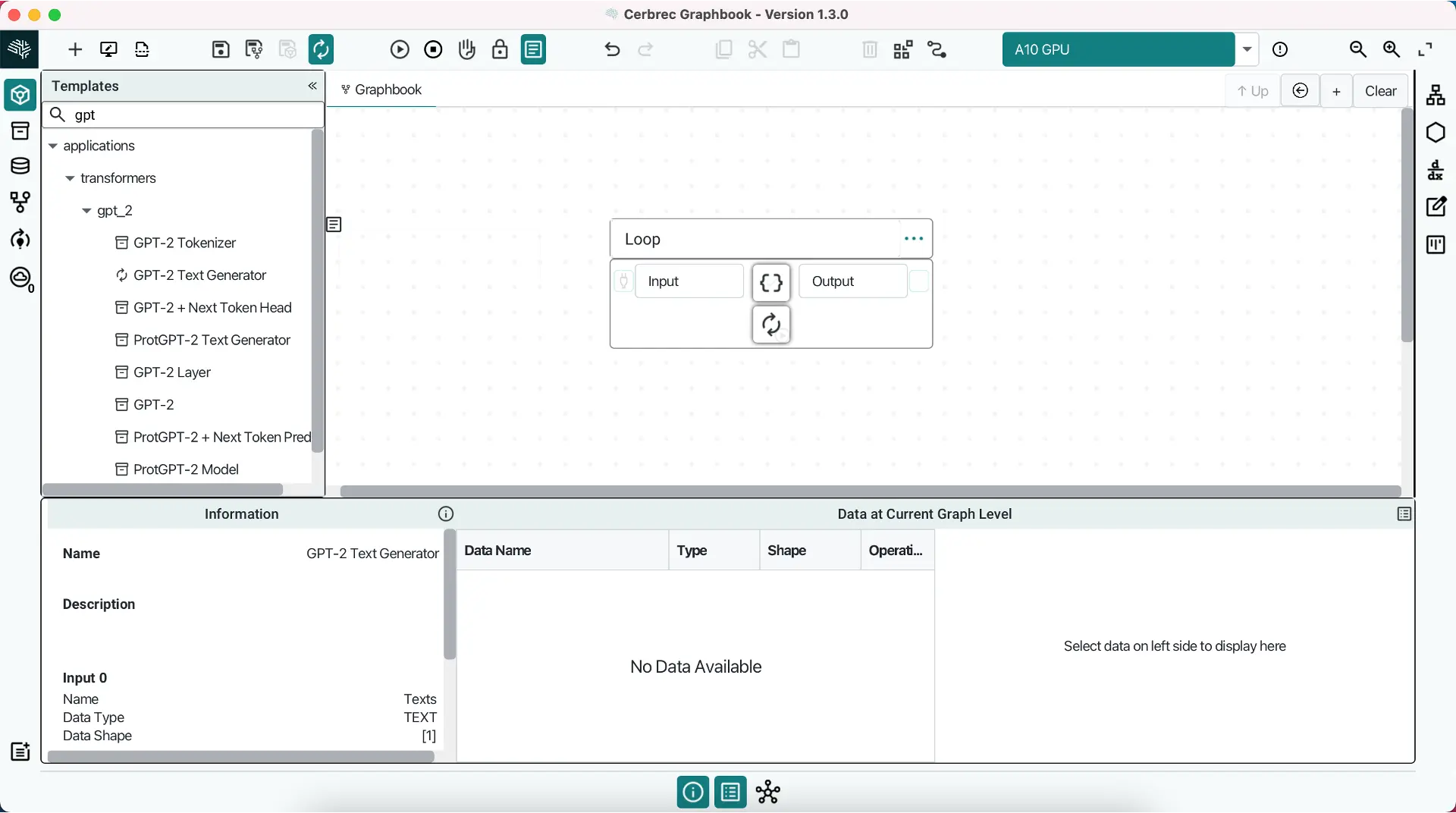
Setting Up Loop Initialization
This subgraph defines the variables that will be looped. However, since Graphbook does not permit direct data transfer from inputs to outputs, an Identity operation is employed to link the connection. This Identity operation is commonly renamed to Initialize Iteration for clarity.
Setting Multiple Looping Variables
Under Initialization, you can set multiple looping variables, as shown in the GPT-2 Text Generator example below. The loop initialization not only sets the iteration but also the next generated token and the concatenated text, including the next token.
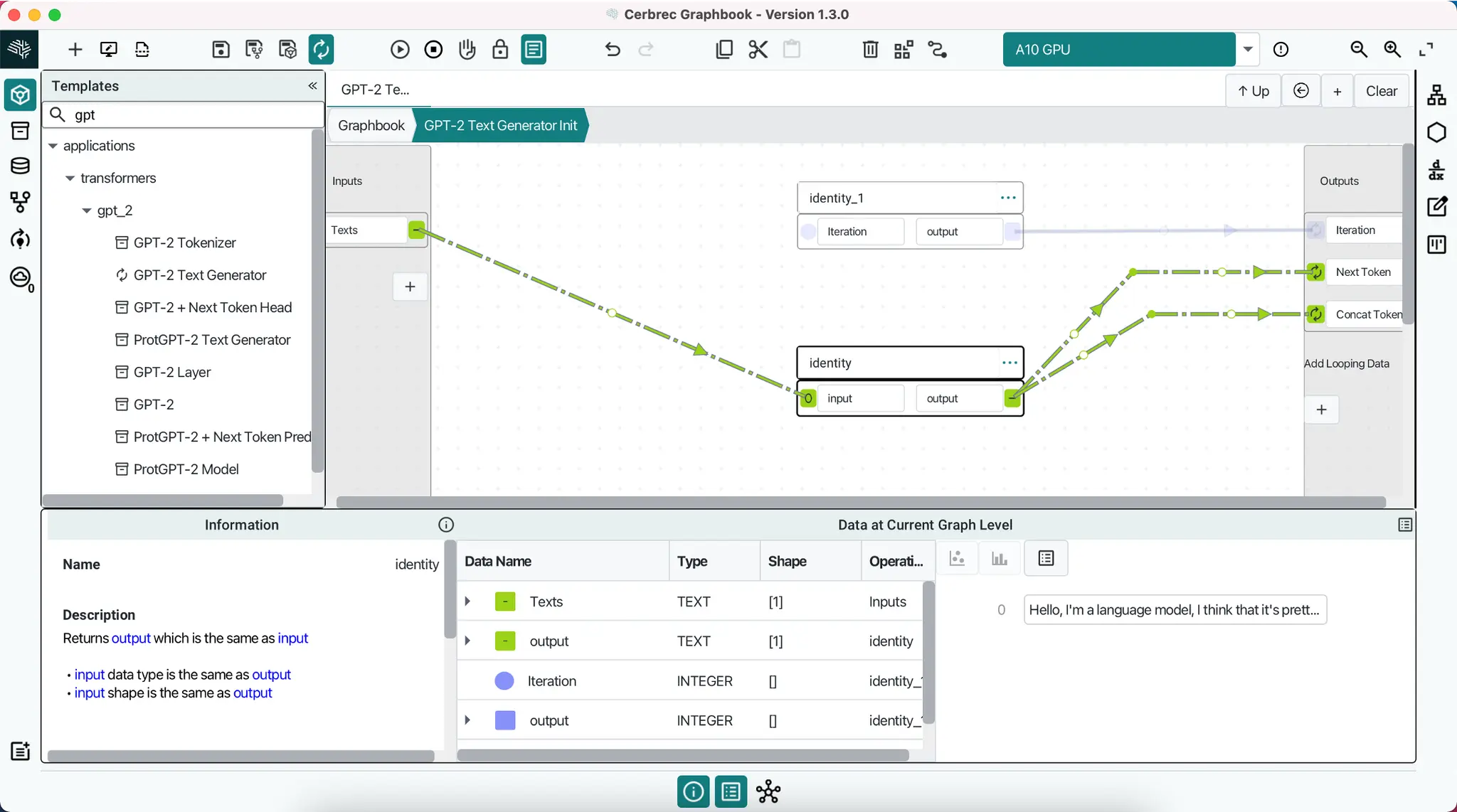
Initialization Confirmation
Once the looping data is initiated, a green check mark appears within the initialization bracket, confirming that the initialization is complete.
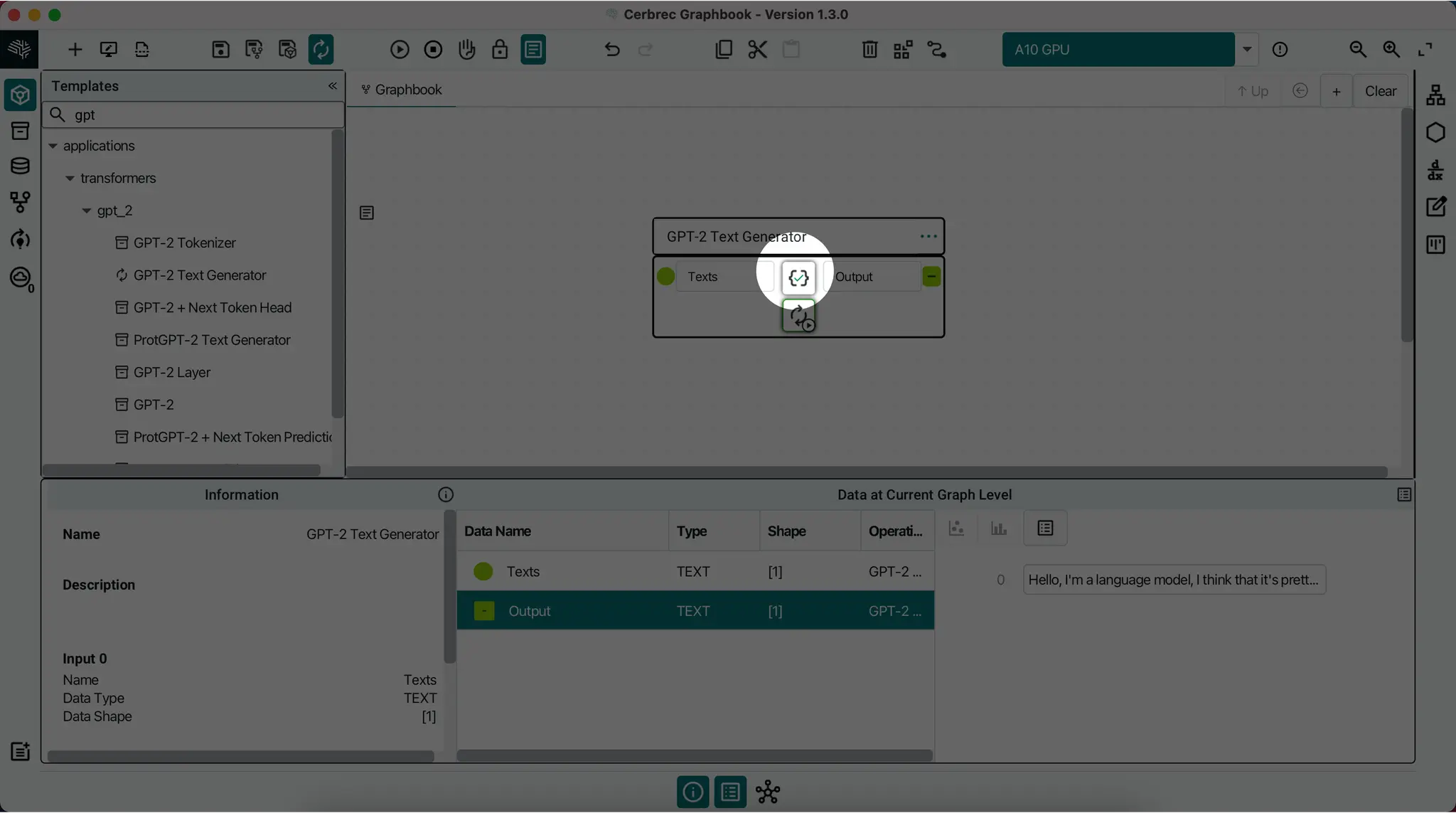
Setting Up the Loop Body
After the data is initialized, the loop body subgraph can be updated. You need to connect the condition to the Run Again, a Boolean variable under the outputs.
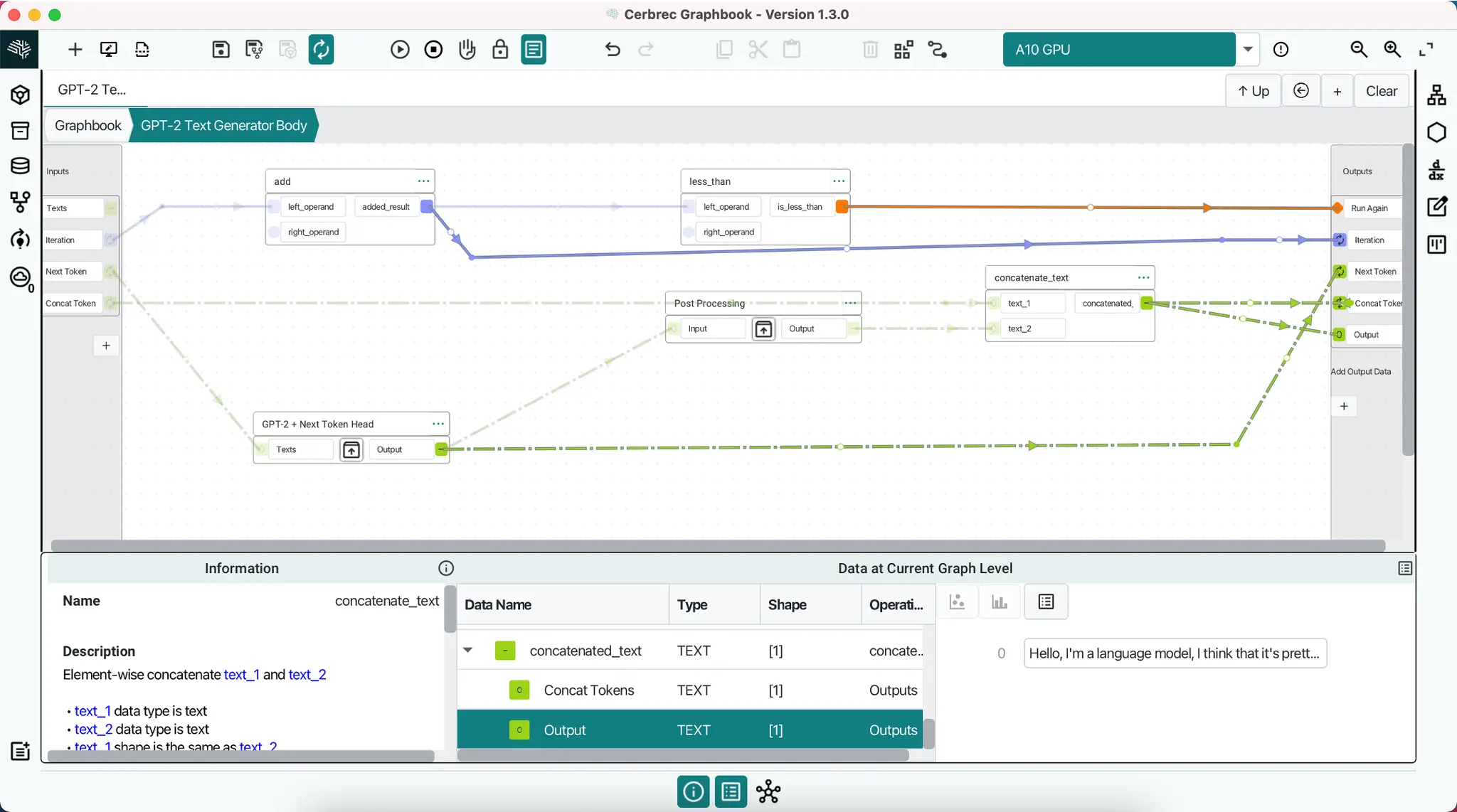
Loop Body Confirmation
When Run Again is supplied, a play button will appear within the loop body icon, indicating that the loop is ready to run.
Track Iterations
Use an Add operation to keep track of the iteration count. The actual output will also be displayed, providing real-time feedback.
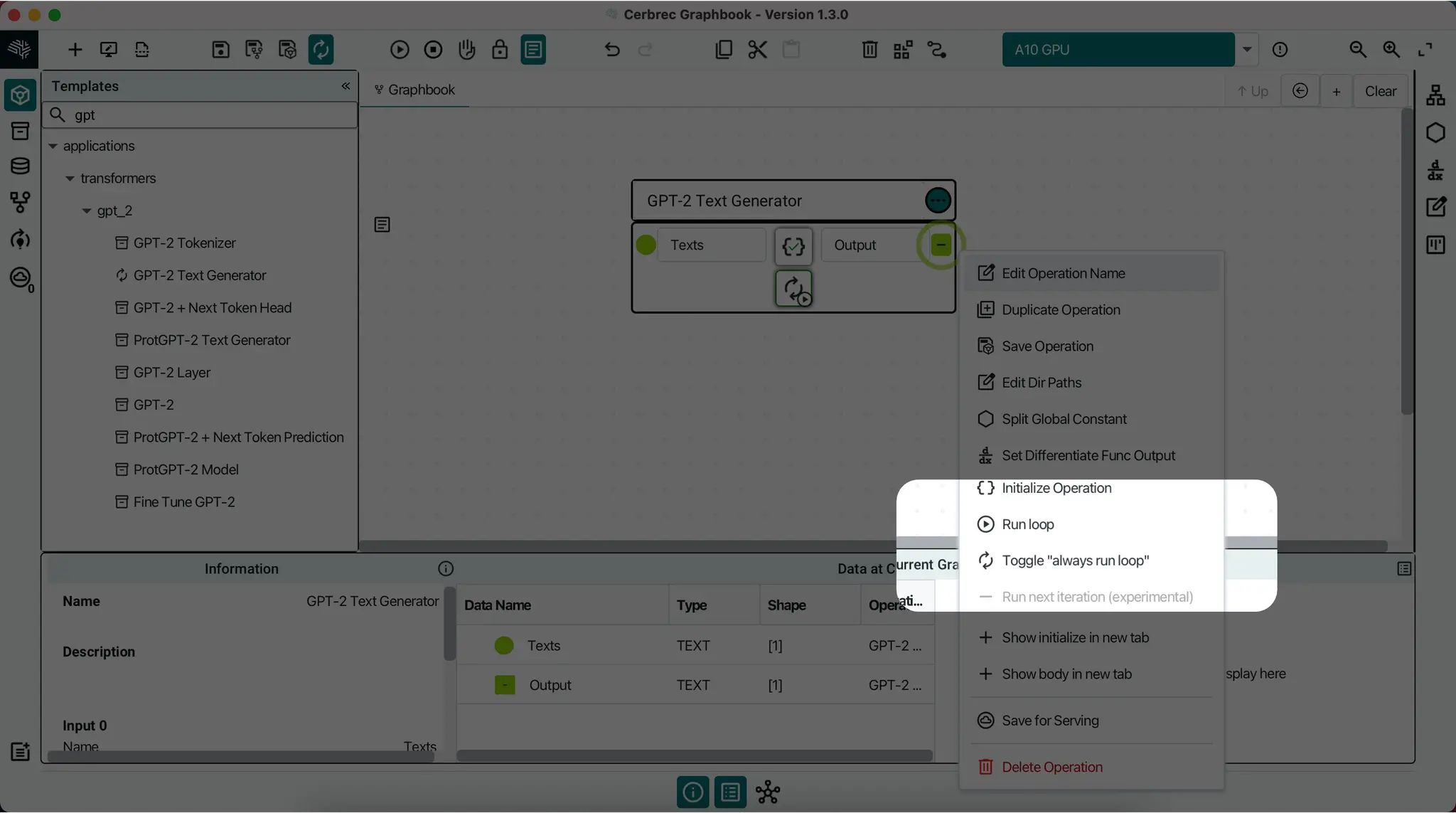
Executing Loop Operation
Loop operation will not run by default. To run the loop, click the Run Loop option in the operation overflow menu.
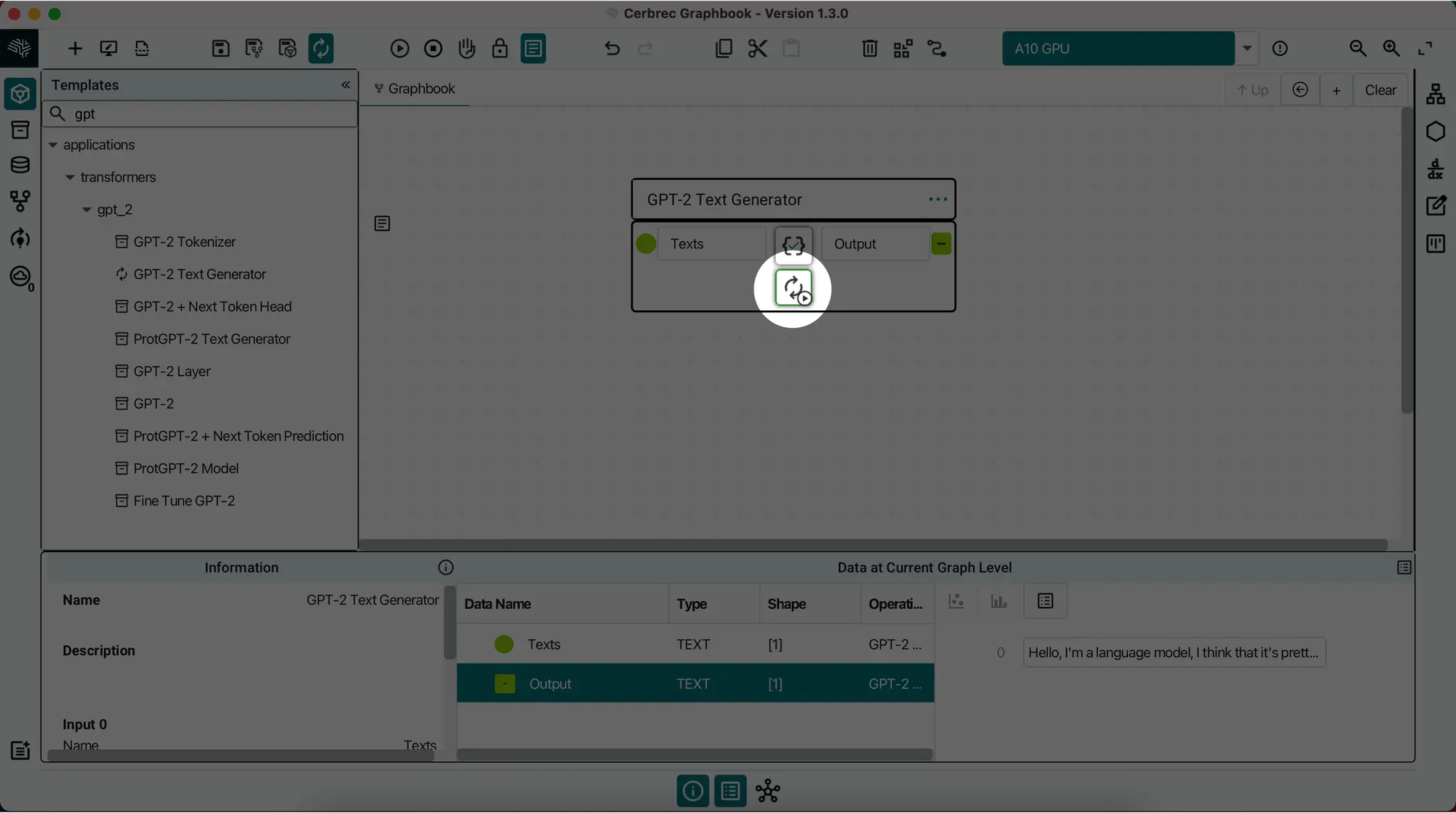
Always Run Loop
To enable the loop to run automatically whenever it receives data, select Toggle always run loop under the operation overflow menu.
When enabled, a green outline will appear around the loop body icon, indicating that the loop is active. The GPT-2 Text Generator and some other pre-built loop operations have the always run loop enabled by default.
